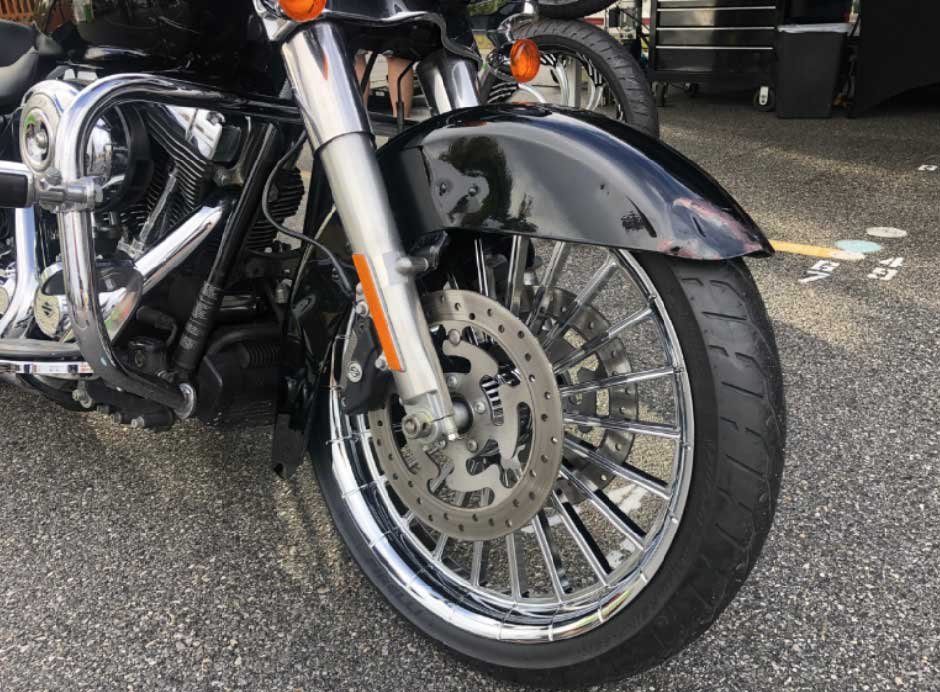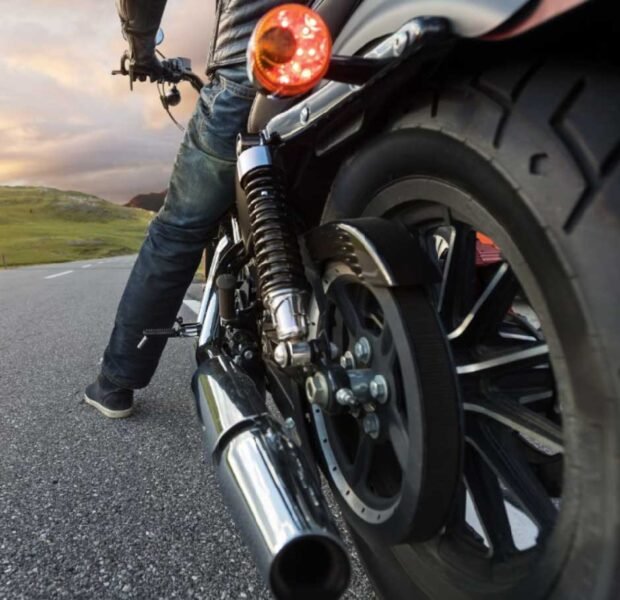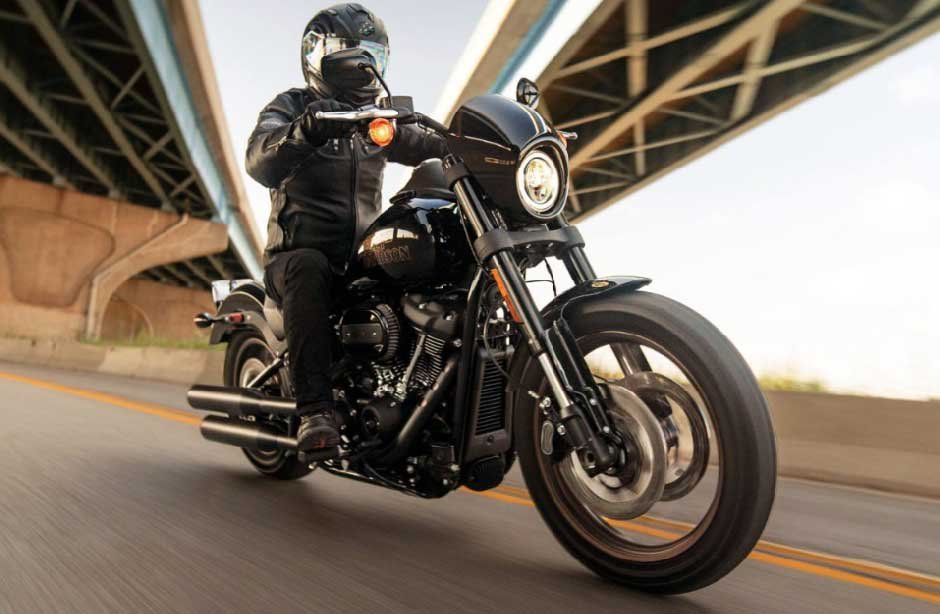Skip to the good bit
ToggleOne of the reasons why riders are so drawn to Harley-Davidson is the brand’s sheer scope for customisation. Regardless of whether you’re rebuilding a vintage Servi-Car, updating an eighties Fat Boy, or tuning the cams out of a recent FXDR 114, you’ll always have compatible, quality parts and accessories to meet every need. And this is not only from factory inventory or proprietary Screamin’ Eagle Harley subdivisions, but also from hundreds of aftermarket parts brands that have built their business around the iconic American bike.
OEM or Aftermarket Wheels?

The benefit of buying bikes new is tailoring your ride to personal tastes. Dealerships can spec everything from seat height and materials to handlebars and foot controls, and just about anything in between. There’s no part can’t be swapped out with a more decent OEM alternative. Parts from dealerships can be bought separately, or as part of packaged kits, often paired in similar finishes and colourways for a distinct look.
The same level of customisation comes when choosing front and rear Harley Davidson wheel designs, regardless of whether you decide on a fully-kitted Road Glide or a bare-boned Sportster. While the factory selection is huge in terms of dozens of cast or laced designs, wheel diameters and material finishes, for outright performance and durability, going aftermarket is the saner option.
This gives you better builds, extending well beyond the cast OEM wheels that make the majority of dealership wheels, superior (and numerous) materials for cleaner looks and enhanced strength, and countless designs to style the bike exactly the way you like.
How Upgrading Your Wheels Benefits Your Ride

Changing the wheels that came with your new or second-hand bike has multiple benefits:
Performance
Lighter materials and advanced production processes like forging contribute to lower sprung mass, leading to a bike that’s faster on the throttle. Braking is also improved, with less weight to move around. What’s more obvious are the changes to handling.
Heavy Harleys aren’t exactly handling freaks, but lighter and stronger wheels boost nimbleness and agility when negotiating turns and changing direction, building confidence and reducing fatigue on longer rides. With tyres in matching profiles and treads, they also increase grip and traction on wet surfaces, leading to increased safety.
Durability and Strength
Cast aluminium is the most common choice for OE Harley wheels, offering a decent blend of weight, performance, all-weather durability and strength. Forged and billet aluminium alloys go one step up in strength, hardness and longevity, enduring repeated potholes and speed bumps and the increased stresses and weight loading of higher speeds and riding two-up with luggage. The materials also retain their polished finish longer, with anodizing further raising corrosion resistance.
Other material choices are magnesium and carbon fibre for even lower weight without compromising strength and riding performance, and steel wheel replacements as cost-effective but generally tough alternatives.
Styling Upgrades
Wheels are a defining feature of any bike, blending or setting the groundwork for how the rest of the bike looks. While tastes are personal, designs ranging from multi-spoked cast, laced, radial and solid disc Harley wheels allow riders to create a bike with unique looks. Moreover, different finishes – gloss, polished, anodised, textured, contrast-cut (with exposed machined spokes on black, anodised rims) – expand the possibilities to meet different tastes, especially when paired with other changes like fatter tyres or forks (and fenders) with revised geometries.
Why Size Matters
Besides impacting looks with wider and larger wheels, sizes also determine riding stability, maneuverability and overall performance. Models with huge factory rear tyres like the Fat Boy, Night Rod and Fat Bob blend characteristic looks with improved grip. Similarly, most current touring models can be fitted with 21 or 23-inch fronts (up from the standard 18 and 19″) for more visual appeal while additionally raising ride comfort by absorbing obstacles and road imperfections. Stability is also improved, especially at higher speeds.
Along with diameters, most custom projects also feature wider rims. In stock outfits, a front Harley Davidson wheel has a width ranging between 3″ to 3.5″ in current models, with rear rims averaging between 4″ and 5.5″. Going wider naturally increases traction in the rear with more rubber in contact with the road, and balances out the front for a more stable ride. Depending on the compound, wider tires will also last longer in general riding. That they look good (and different) is another bonus. Just consider sane widths when upgrading. Fronts can go up to 5″ in width, and rears to 8.5″. Anything more, and you lose agility and steering in tighter corners, unnecessarily impede low-speed handling and risk culling performance with higher rolling resistance.
Lastly, when going larger and wider, consider fitment and any needed modifications to stock parts, including fenders with bigger fronts, or swingarms in the rear. Older bikes can easily fit bigger front wheels with drilling and minor fender relocations, while post-2014 bikes need an additional relocation bracket.
Buying Considerations
Several key buying factors ensure your new aftermarket wheels fit, get you the expected performance boost and look the part:
- Settle for appropriate wheel sizes for your Harley: Cruiser models tend to go with smaller and thinner wheels (with notable exceptions) than comparable and heavier tourers. Though this is a general guideline and custom designs rarely fit a clear-cut mould without also including extensive changes to other parts.
- Observe correct offset and bolt patterns: This ensures proper fit of the hubs and braking components. Also, pay attention to axle sizes.
- Get matching tyres: Bigger and wider wheels necessitate new tyres in the right sizes.
- Be wary of any necessary modifications: Changes to forks, fenders, brake discs, brake lines, cabling, springs, shocks, swingarms and other components might be needed when changing the factory bike geometry with aftermarket Harley motorcycle wheels.
Once you’ve settled on size and fitment, consider how designs, materials and production methods meet your styling needs. Laced wheels have a different aesthetic to spoked wheels, and differences in colours, finishes and surface treatment all matter. This is again down to personal preference. Possibly more important is choosing between cast, forged or billet wheels, as the different production processes impact strength, durability and weight, and of course, price.
Lastly, consider new Harley Davidson wheels from reputable manufacturers and factor in the cost of professional installation if you’re uncomfortable doing the job yourself.







